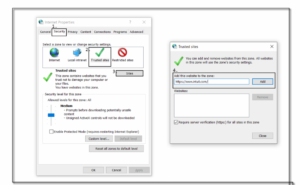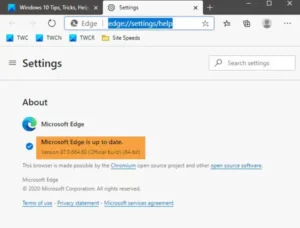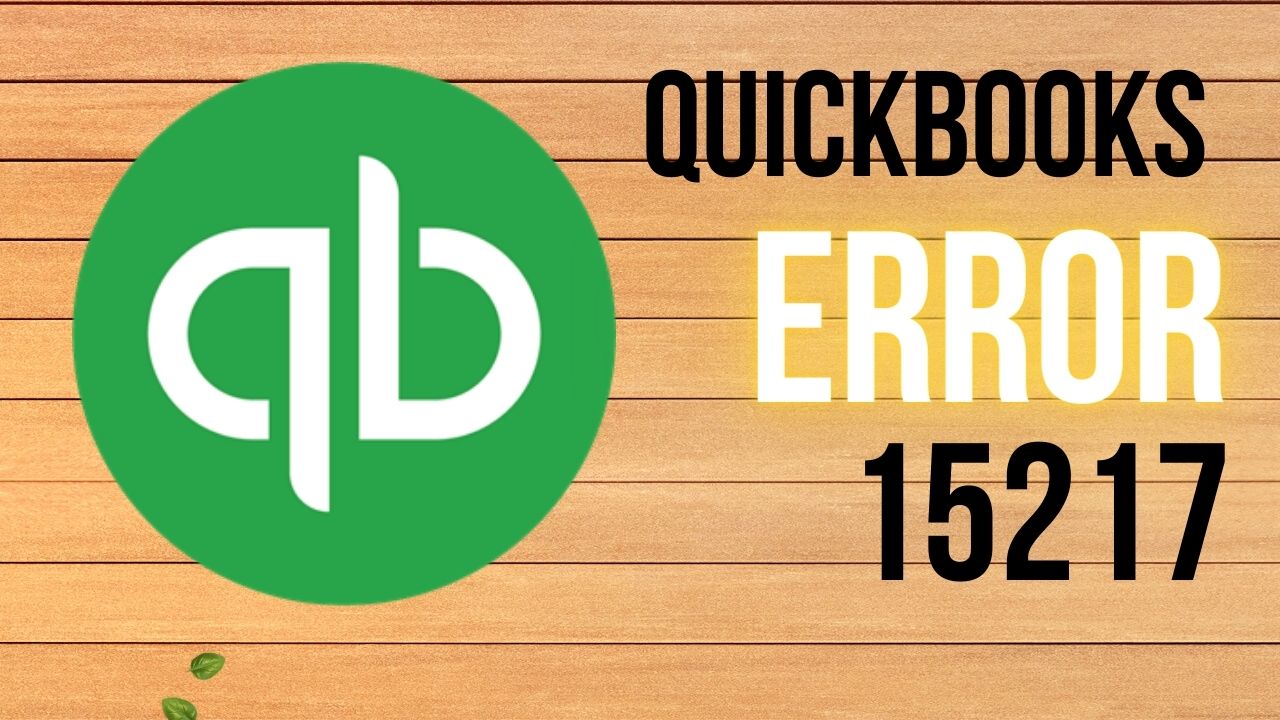If you are a QuickBooks user, then you might have come across Error 15217 at some point in time. QuickBooks Error 15217 is a common error that usually occurs when you try to update your QuickBooks desktop or payroll. This error can be frustrating as it can stop you from performing necessary tasks on your QuickBooks software. In this article, we will discuss what QuickBooks Error Code 15217 is, its causes, and its solutions.

What is QuickBooks Error 15217?
QuickBooks Error 15217 is a common error that occurs when you try to download a payroll or software update. The error message that appears on your screen usually says, “The QuickBooks update did not complete successfully. The update is missing a digital signature.” The error can occur due to various reasons, such as incorrect system settings, digital signature issues, antivirus or firewall blocking the update, or incomplete or corrupt installation of QuickBooks software.
Causes of QuickBooks Error 15217
There are several reasons why you may encounter Error 15217 QuickBooks . The common causes of QB error 15217 are given below:
- Incorrect system settings: If the system settings of your computer are not configured properly, then you may encounter this error.
- Digital signature issues: QuickBooks requires a digital signature to download updates. If the digital signature is missing or damaged, then you may encounter this error.
- Antivirus or firewall blocking the update: If your antivirus or firewall is blocking the QuickBooks update, then you may encounter this error.
- Incomplete or corrupt installation of QuickBooks software: If your QuickBooks software is not installed properly, then you may encounter this error.
Symptoms of QuickBooks Error 15217
Some of the symptoms of QB Error 15217 are:
- The QuickBooks crashes or freezes.
- You are unable to download the payroll or software update.
- The error message “QuickBooks update did not run smoothly. A “Digital signature” is missing from the update” appears on the desktop.
Troubleshooting QuickBooks Error 15217
Sure, here are some solutions to troubleshoot QuickBooks Error 15217:
Solution 1: Verify Microsoft Edge Settings

- Firstly, go to the option “Tools” menu in Microsoft Edge.
- Click on “Internet Options” and then click on the “Advanced” tab.
- Then scroll down to the option “Security” and check the “Use TLS 1.0” checkbox.
- Click on “Apply” and then “OK”.
- Restart your computer and attempt to update QuickBooks once more.
Solution 2: Update Your Windows
- First, click on the option “Start” button and then go to the “Settings” option.
- After selecting “Check for updates,” let Window frames browse for fresh updates.
- If there are any updates available, click on “Download and install” to start the installation process.
- Wait for the updates to download and install. This may take some time, depending on the size of the updates and the speed of your internet connection.
- After installing the updates, restart your computer to apply the changes.
Solution 3: Check Your Antivirus and Firewall Settings
- Firstly, click on the Windows “Start” button option and then type “Control Panel” option in the search bar. To access the Control Panel, press the “Enter” key.
- Click on “System and Security”.
- Click on “Windows Defender Firewall” (or any other antivirus or firewall program that you are using).
- Click on “Allow an app or feature through Windows Defender Firewall” (or a similar option in your antivirus or firewall program).
- Click on the “Change Settings” button and make sure that QuickBooks is checked on both the Public and Private networks.
- If QuickBooks is not on the list, click on “Allow another app” and navigate to the QuickBooks executable file.
- Click “Add” and then “OK” to save your changes.
Solution 4: Clear Your Digital Signature

- You will open Microsoft Edge and go to “Internet Options”.
- Click on the “Content” tab and then click on “Certificates”.
- Click “Remove” on the “Digital Signature” tab.
- Restart your computer and try again to update QuickBooks.
Solution 5: Run QuickBooks as an Administrator
- Find the QuickBooks icon on your desktop or in the Start menu.
- Select “Run as administrator” from the shortcut menu when you right-click on the QuickBooks icon.
- Enter your administrator username and password if prompted.
- Click “Yes” or “Allow” on any User Account Control windows that appear.
- QuickBooks should now launch with administrative privileges.
Conclusion
QuickBooks Error 15217 is a common error that can be frustrating when you are trying to update your QuickBooks software. This error can be caused by various reasons such as incorrect system settings, digital signature issues, antivirus or firewall blocking the update, or incomplete or corrupt installation of QuickBooks software. However, by following the solutions outlined in this article, you can easily troubleshoot and fix this error.
Frequently Asked Questions (FAQs)
Q.1 Can I resolve QuickBooks Error 15217 on my own?
Yes, in many cases you can resolve QuickBooks Error Code 15217 on your own by following some simple troubleshooting steps. However, if the error persists after trying these steps, you may need to contact QuickBooks support or a qualified IT professional for further assistance.
Q.2 How do I check my antivirus and firewall settings?
To check your antivirus and firewall settings, you can navigate to the Control Panel on your Windows computer and locate the settings for your antivirus or firewall program. From there, you can adjust the settings to allow QuickBooks to access the internet and make necessary system changes.
Q.3 Why is it important to run QuickBooks as an administrator?
Running QuickBooks as an administrator gives the program permission to make system changes that are necessary for updates to be installed successfully. Without administrative privileges, QuickBooks may encounter errors or be unable to complete the update process.

